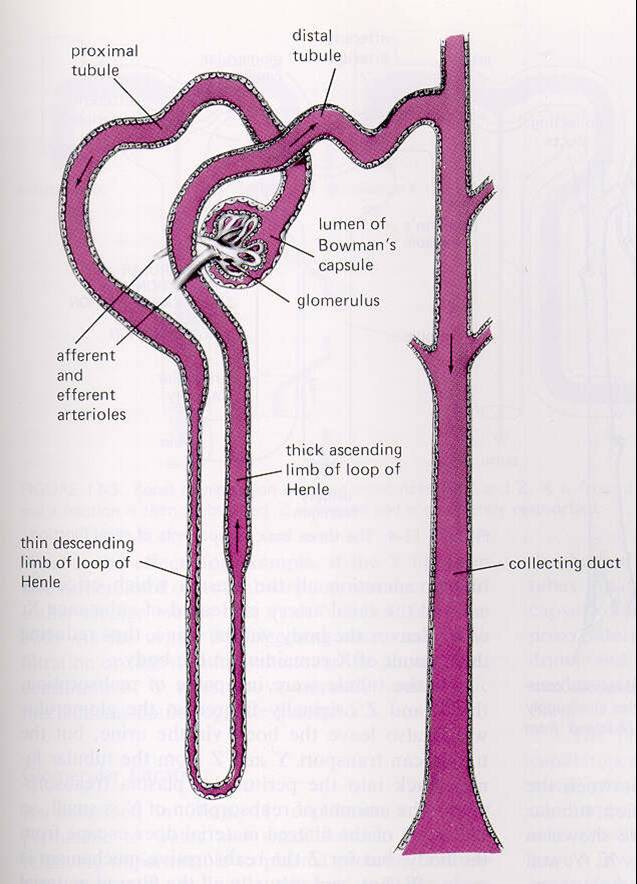
| MadSci Network: Anatomy |
Well Gaurishankar,
This is going to be one hell of a loooong explanation - so buckle up, and go forth!!!
Among the various functions of the kidney, the major is regulation of water and electrolytes or osmolarity of body fluid.
The nephron forms the basic functional unit of the kidney and comprises of various parts as shown in the picture.
Urine is formed by the process of ultrafiltration, and collected in the proximal tubule, from where it passes to the loop of Henle, the distal tubule and the collecting ducts, undergoing the processes of reabsorption and secretion to form the urine that is ultimately passed out. The concentration of urine so formed is governed by the water and elecrolyte balance of the body, and the required concentration is achieved by the processes mentioned above in the nephron.

The loop of Henle functions basically in regulating the salt (electrolyte) concentration in urine. Let us see the anatomy of the loop first – it consists of three parts – the descending thin segment, the ascending thin segment and the thick ascending segment.
The descending part of the thin segmen is highly permeable to water and moderately permeable to most solutes. The function of this nephron segment is mainly tjo allow simple diffusion of substances through its walls. About 20% of the filtered water is reabsorbed in the descending limb, because, the ascending limb (both thin and thick parts) are impermeable to water – a characteristic which is important for concentrating urine.
Because the thick segment of the ascending limb is virtually impermeable to water, most of the water delivered to this segment remains in the tubule, diluting the urine, as most of the solutes are reabsorbed. This feature is important in allowing the kidneys to dilute or concentrate urine under different conditions.
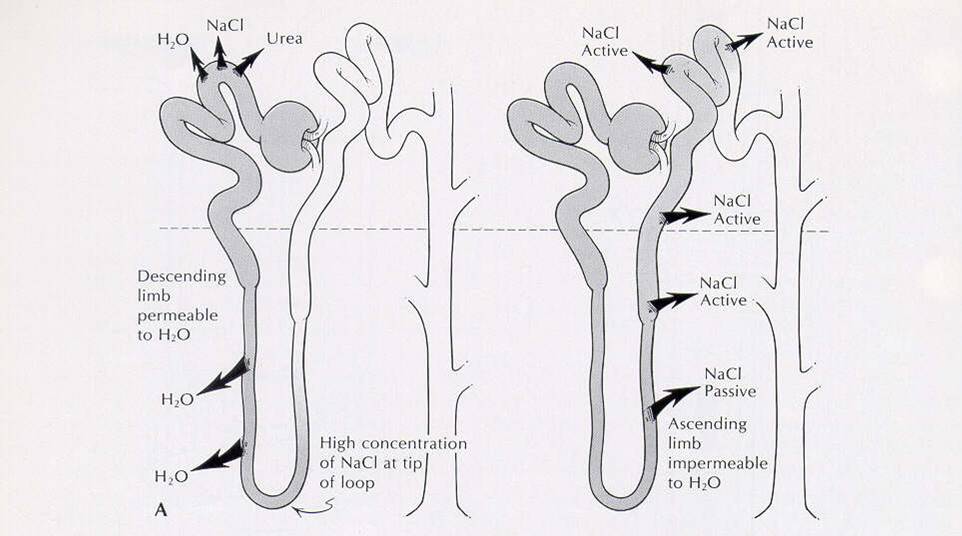
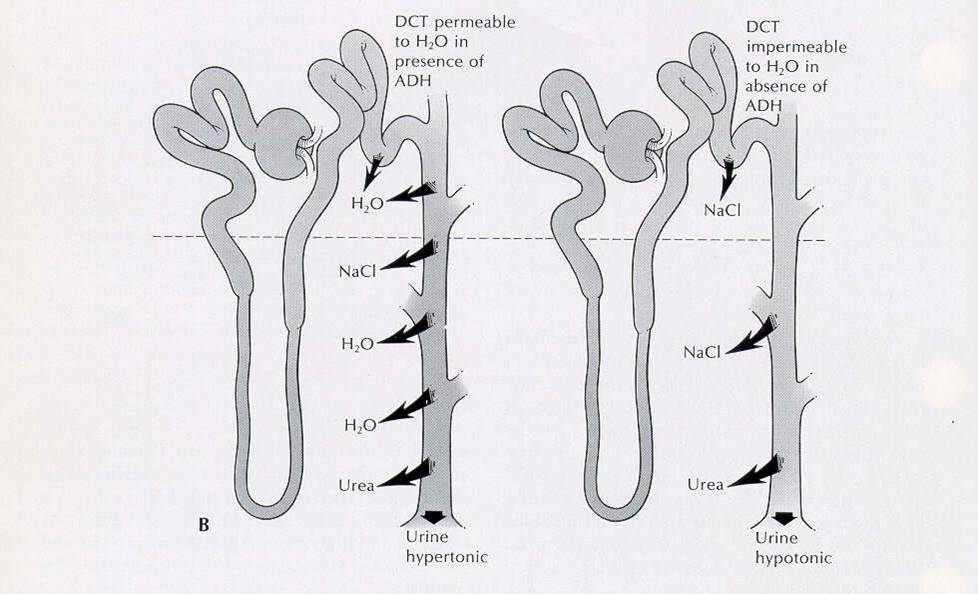
When there is large excess of water in the body (say due to ingestion of excess water), the kidney can excrete as much as 20 litres per day of dilute urine – the impressive feat done by continuing to reabsorb solutes while failing to reabsorb wter in the distal parts of the nephron, esp the distal tubule and the collecting ducts.
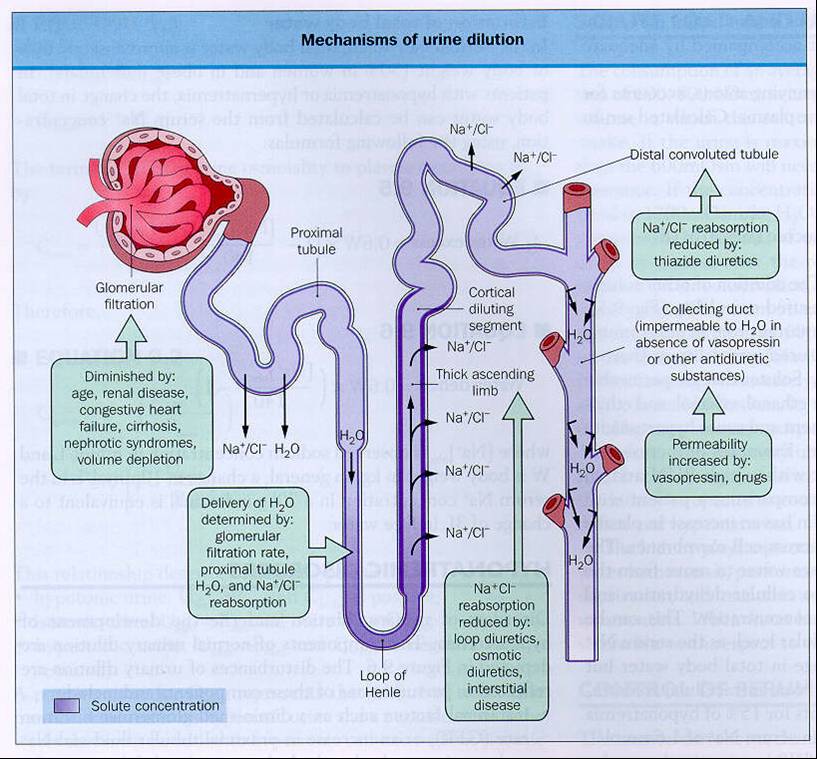
And when there is a water deficit in the body, the kidney forms a concentrated urine by continuing o excrete solutes while increasing water reabsorption and decreasing the volume of urine formed.
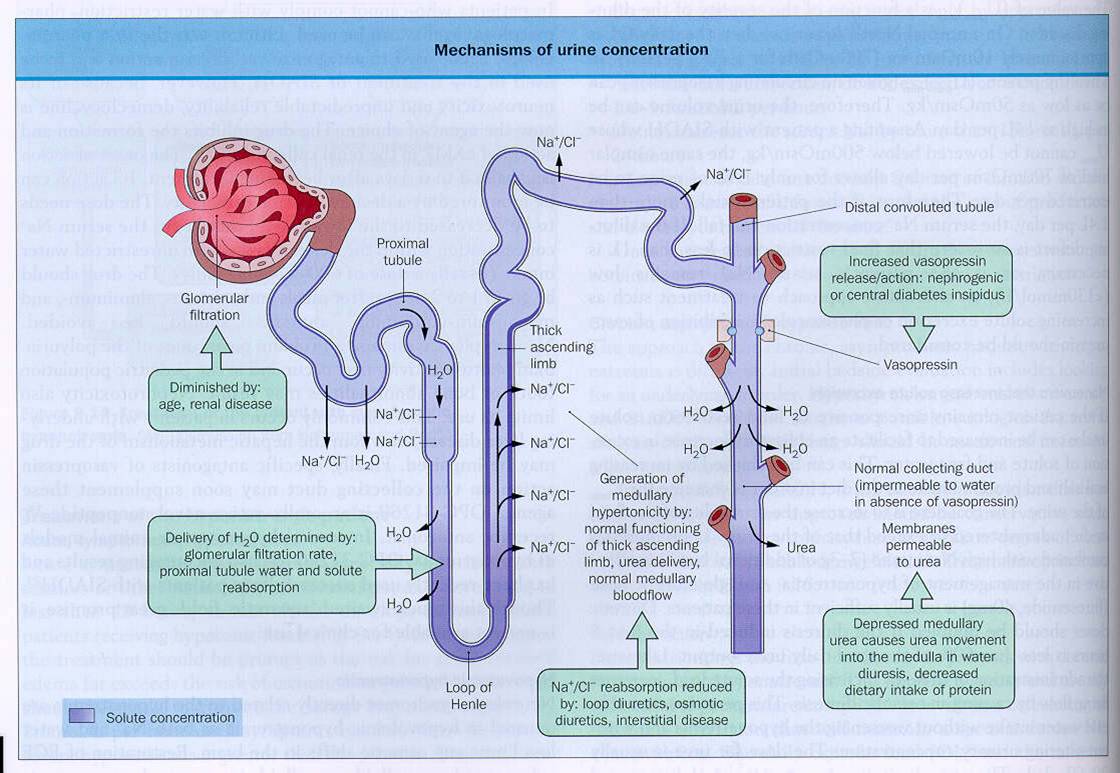
So, what ultimately happens is that, of the urine filtered through the nephron, most of it is reabsorbed (water as well as solutes) by the proximal tubule and the loop of Henle. When urine reaches the distal tubule, urine is essentially diluted. The final concentration of the urine formed depends on the condition of the body, and the distal tubules, accordingly dilute or concentrate urine.
Hope this did not sound too boring, but, well, to understand one part of the nephron, you have to know the whole function.... Do not hesitate to requery, if you have any doubts.
Your really Mad Scientist
Ankur
P.S. - Thanks for the question, you helped me revise a lot on this topic :)
References:
1. Textbook of Medical Physiology, 9th edi, Guyton and Hall, Harcourt-Brace pub
2. Picture slides from The University of Vermont website http://physioweb.med.uvm.edu
Try the links in the MadSci Library for more information on Anatomy.